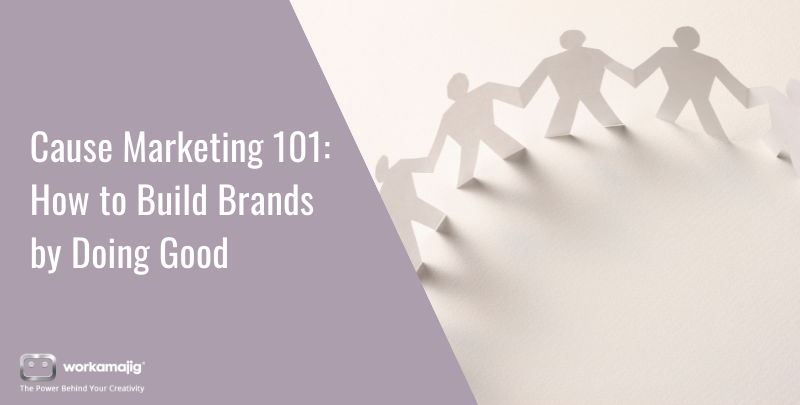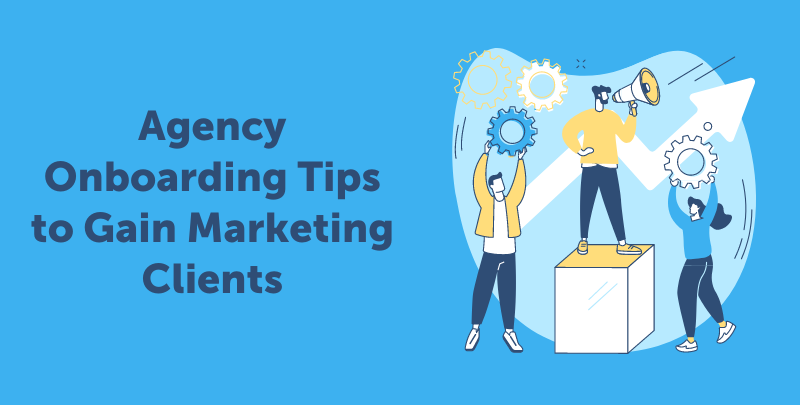Get all our templates, tips, and fresh content so you can run effective, profitable, low-stress projects in your agency or team.
Struggling to keep your clients happy? This article will show you how to measure and improve client satisfaction.
Agencies don’t like to admit it, but they are essentially in the business of customer service.
Sure, creativity and results matter, but the happiness of your clients is often the one metric that will define your success as a business.
Client satisfaction is a tough beast to figure out, especially in an agency setting. The tried and tested rules of customer service don’t apply. Nor can you rely on the client-focused service tactics of large B2Bs.
Instead, you have to lean on an agency-specific mix of communication, service, and reporting to keep your clients satisfied.
I’ll break down this concept in detail below. You’ll learn why client satisfaction matters, how to track it, and finally, how to make clients happier.
I. How to Measure Client Satisfaction
Client satisfaction is tough to measure in an agency setting.
You usually don’t have the luxury of hundreds of clients for any statistical exercise. You can send over some NPS surveys, but if you have under 25 clients, the volume simply won’t be enough to show a clear trend.
However, there are certain qualitative and quantitative measures you can adopt to gauge your current client satisfaction:
1. Quality
Quality - of service, products, and results - is an indicator of customer satisfaction across industries and sectors. It’s a rare customer who is dissatisfied with a quality product or service.
In the agency world, quality is frequently linked to value. Sentiments such as ‘this was a good choice’ or ‘I am glad I bought this service’ are good indicators of satisfaction.
One study even found that value and pricing are the biggest reasons why clients leave agencies.
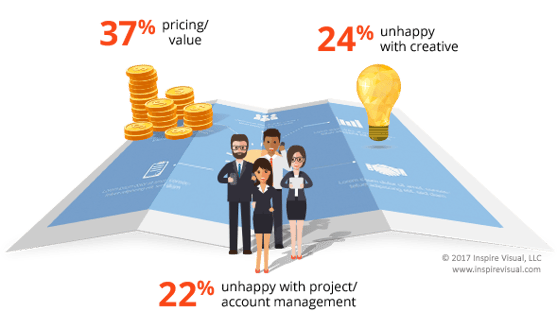
Value, of course, is subjective. A Fortune 1000 client with a seven-figure budget might find a $500k website “good value”, while a small business might balk at the same figure.
So how do you evaluate value and, by proxy, quality?
Two methods:
- Direct surveys: Simply asking clients what they feel about your agency can usually tell you how satisfied they are with your quality. Make sure that your surveys are short - 3-4 questions max.
- Value-focused metrics: Do clients frequently show resistance at your prices? Do they haggle when you send them invoices? Are your deals often soured because of money related issues? All of these can indicate that clients don’t find much value in your services. Tracking these metrics, as we’ll see below, can help quantify your quality.
2. Loyalty
One of the easiest ways to gauge satisfaction is by asking your clients the following question:
How likely is it that you would recommend our company to a friend or colleague?
If this query seems familiar, it’s because it’s the foundation of the Net Promoter Score (NPS).
NPS, as we’ve covered earlier, is a customer happiness metric. It has two parts - a scale where you rank the likelihood of recommending a product/service on a scale of 1-10. And an optional part where you explain the reason behind the choice.
Anyone who scores you 9 or 10 is labeled a “promoter”, while scores below 7 are “detractors”. The difference between your total promoters and detractors, by percentage, is your “Net Promoter Score”.
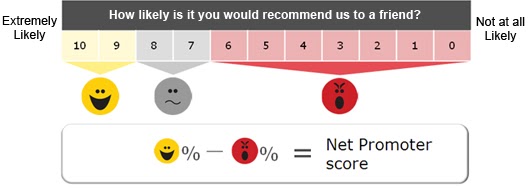
A high NPS means that your clients are more likely to recommend you to their colleagues - a strong measure of loyalty and satisfaction.
Beyond NPS, there are other measures of loyalty as well, though they aren’t quite as objective. Some of these are:
- Lots of word of mouth referrals, especially without asking
- Long-standing client relationships with little to no resistance to price increases
- Clients following your recommendations or seeking advice outside your domain of expertise
3. Attribution
One of the most effective ways to measure satisfaction is to frame questions in the context of a specific attribute.
First, it’s important to define and develop measures for each attribute that directly pertains to your client’s success.
Typically, this can be done by asking your team questions like:
- Was our account/client services team friendly?
- Did our client feel pressured or rushed in any way?
- How useful was our support team?
- Did our service exceed—or meet—expectations?
Attributional questions can address specific successes or problems that may be overlooked in a general overview.
Furthermore, posing these questions can help pinpoint the root of your client satisfaction—and how it directly relates to your specific offering of services.
The hard part about this exercise is that it doesn’t yield quantifiable results, which makes it unwieldy for large agencies.
This is why you also need to back up your satisfaction analysis with hard metrics.
Metrics to Measure Client Satisfaction
Apart from NPS scores, client satisfaction can be hard to quantify.
Luckily there are a few metrics that can give you a fair idea of how happy clients are with your service:
1. Client Response Time
How quickly you respond to client queries is a good measure of client satisfaction with your service, if not your results.
Agencies don’t always track this number, but they should. A quick response to an issue shows commitment and seriousness. It also shows that you’re willing to listen and eke out time for clients.
Track the average response time to queries for all client-facing teams, i.e. support and accounts. Clients typically expect a quicker response to phone requests when compared to emails or chat messages. Aim for phone turnaround in no less than 3 minutes, chat response in no less than 12 hours, and email follow-ups within 1 business day.
Paying attention to these benchmarks will help your agency work towards better response times, which in turn, will improve the overall customer experience.
2. Solution Metrics
Response time measures your service quality, but it ignores what your agency really offers - results.
Results or solution metrics will vary from client to client and project to project, so there is no “one metric to rule them all”. In SEO projects, one client might prioritize #1 rankings, while another might focus on overall traffic growth.
Your first step, therefore, should be to understand the metrics a) clients care about, and b) the project requires.
Ask yourself the following questions:
- What problems are my clients trying to solve?
- What questions do my clients need answered?
- What information do my clients need, but were unable to find?
Once you discover your client’s true motives, start tracking the solution metrics that align with their and the project’s needs.
Not only do solution metrics test your ideas to see which methods effectively improve a given problem, but they also track the overall success of individual solutions.
We’ll cover understanding clients in more detail in the next section.
3. Problem Resolution Time
While you have certain leeway as a creative agency in responding to problems - you have to go through the creative process, after all - you can’t ignore resolution time altogether.
The creative process might be important, but efficiency and timeliness remain the bedrock of agency service.
Of course, this doesn’t mean that you should focus entirely on speed. Rather, it is important to get things right the first time.
Instead of only worrying about time, ask yourself:
“How many interactions between the client and the project team are necessary to resolve this issue?”
Your goal should be to minimize:
- Total time taken to resolve a problem
- Total number of touches required for problem resolution
The ability to anticipate your client’s needs, channel your agency’s communication efforts, and spend the necessary amount of time on a working solution ultimately influences your client satisfaction rates.
Measuring client satisfaction isn’t enough, of course. You also need to find a way to improve client satisfaction.
Let’s learn how to do that in the next section.
II. Creating an Agency Client Satisfaction Strategy
Agencies traverse fundamentally difficult terrain when it comes to dealing with clients.
Customer service, as it exists for consumer companies, isn’t a roadmap for agency client success. Sure, being polite and resolving queries quickly is important, but it can’t be your only strategy for dealing with six-figure accounts.
B2B client happiness strategies, on the other hand, often demand the kind of scale few agencies have. A B2B manufacturer might have hundreds, even thousands of clients. But it’s a rare agency that has a client roster even in the three digits.
The variable nature of agency clients is also a challenge. You might have one client with a five-figure budget for a website redesign project. Another with a mid-six-figure budget for a PPC campaign.
Standardizing service across all such clients isn’t trivial.
Any agency client satisfaction strategy, therefore, must be:
- Account-focused, i.e. tailor-made for each client
- Service-focused, i.e. standardized for different types of services
- Stakeholder-focused, i.e. customized to the needs of individual stakeholders
There are parts of each client interaction that can be standardized, and there are parts that must be custom-made.
Let’s dig into this in more detail below.
Standardize Common Client Interactions
If you’ve ever managed customer service for a consumer company, you know that automated form responses are a key weapon in your armory.

Automated form responses such as these are a part and parcel of customer service, especially in the consumer space
If no resolution, such canned responses at least give you breathing room to find a solution to the customer’s problem.
Canned responses, of course, aren’t a viable solution for agencies - your clients demand and deserve more personalized service.
But that doesn’t mean you have to create every client interaction from scratch. Large parts of client service can and should be standardized, even in agencies.
Examples include:
- Weekly, monthly, and quarterly performance and financial reports
- Time tracking reports and invoicing
- Communication plans
- Onboarding process emails and documentation
For instance, instead of creating a monthly traffic report from scratch, you can use a template or automated tools like Google Data Studio to standardize reporting. This can be done across client types (say, “startup clients”) or service types (like “SEO clients”).
I don’t have to tell you that standardization is important if you’re an agency. Standardization makes scalable growth possible, streamlines communication and clarifies roles.
Read this guide to learn more about standardizing agency processes.
Do this to start the standardization process:
- Analyze past client interactions. Make note of any interactions, reports, or documentation that were common across multiple clients.
- Create templates and utilize tools to standardize these interactions. Make sure that these templates are easily accessible.
- Create rules and instructions to help everyone utilize standardized templates
Create a Two-Tier Messaging Strategy
One of the most common client complaints about agencies is the lack of coherency across all messaging. Some emails are too complex and jargon-filled, others are too plain and templatized.
This problem stems from the nature of client queries, especially in a creative/technical setting.
All client queries can be broadly divided into two categories:
- Questions that need simple, direct answers (such as: “When will the final report be ready?”)
- Questions that need creative or technical answers (such as: “What’s the right content approach for this email series?”)
As you can imagine, you can’t adopt the same approach to answer both these types of questions. The first can be dealt with directly by the account manager, but to deal with the latter, you’ll have to rope in a specialist.
Your messaging strategy, thus, should also be two-tier.
Flag each query that comes in as either direct or specialist based on its content:
- Direct queries ask for functional input, such as current status, delivery time, etc. Your response to such queries should also be, well, direct.
- Specialist queries ask for technically or creatively complex input, such as content strategy, design direction, technical feasibility, etc. Tag and forward such queries to a specialist in the field.
One study in Harvard Business Review notes that such a messaging strategy can result in positive client interactions:
“Clients are asking for an answer to a problem, and they almost always want an answer from the same person. But in a different context, such as new-product development, you’d need to have a more creative and more dynamic discussion, and you’d want to have people rotate more.”
It’s equally important that your messaging is clear, upfront, and easy to follow. Use language that aligns with the stakeholder’s expectations and experience. If you know the stakeholder is or was a programmer, don’t hesitate to throw in some programming-related terms in your communication - they’ll appreciate that you’re not dumbing things down.
I recommend the “single room Message House” approach when crafting your messages.
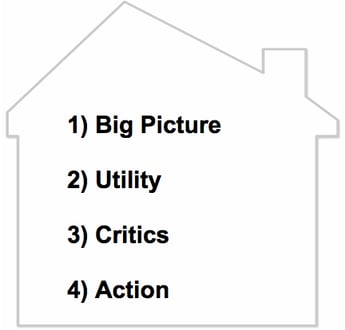
This will add structure and clarity to your messaging, regardless of its target audience.
Focus on Individual Stakeholders and Projects
No two projects are alike, nor do two different stakeholders care about the same issues.
Your client satisfaction strategy, thus, also has to be tailor-made for each project and stakeholder.
This is easier said than done. Stakeholder intentions can be hard to fathom, especially if you don’t have established relationships with the client. It’s not rare to find a project where the metrics a stakeholder cares about are completely at odds with what the project demands.
For instance, an SEO project might focus on traffic growth as its key metric. However, due to internal politics, the stakeholder might prioritize engagement rate as the top metric.
When this happens, your overall client satisfaction is tied to keeping stakeholders happy while still meeting the project’s goals.
It’s a tough balancing act, I know, but it’s also a necessary one in agency life.
Step one, thus, should be to create a “stakeholder map”. Try to understand what the stakeholder cares about. Figure out the stakeholders:
- Past experience or education - a former software engineer might care more about your underlying code structure than a former accountant
- Position within the client’s company - new hires might want to prioritize headline-grabbing vanity metrics instead of core solution metrics
- Growth vs maintenance - some stakeholders care about “growth” metrics, i.e. metrics that show incremental growth in a new area. Others care about “maintenance” metrics, i.e. metrics that show improvement in an established area (such as conversion rate improvement). Figure out which camp your stakeholder falls into.
The more you can align stakeholder expectations with project requirements, the happier your clients will be.
Over to You
Keeping clients satisfied means tracking countless metrics and staying on top of issues.
The easiest way to do this is by using agency management software like Workamajig.
Workamajig makes it easy to standardize your service with templates. It also makes it easy to track the metrics that matter to you and your clients.
Give Workamajig a try today to see how it can transform your business.
Related Posts
